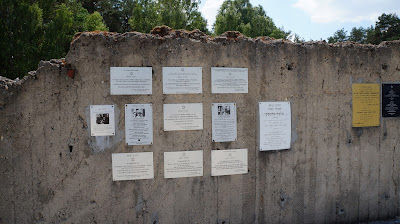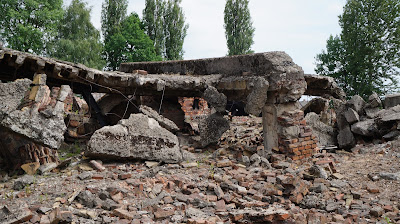It’s been a while since I’ve had a chance to hop on here and
update everyone about what I’ve been up to. I have a lot to go over, but I’ll
try to be brief! Following my return from Germany I hit the ground running to
get everything caught up at work. I have continued my work with the Alpha Omega
dental program and we have helped a total of 19 low-income Holocaust Survivors
access free dental services. Some survivors haven’t been to a dentist in
decades, and others simply can’t afford to pay for the expensive crowns,
dentures, and bridgework that is required when you reach a certain age. Overall
this program has been successful in helping these Survivors gain access to
dental services, and regain function and eliminate their pain.
Following my trip and lecture in Germany I was invited to
work on a PhD at the University of Giessen! I can work on the bulk of the
dissertation here in the U.S. while I’m working at JFS. I am very excited to
start this next phase of my life. I am currently working on narrowing down my
topic, but I do know it will be based in some way on Metro-Detroit Survivor testimony
and remembrance. Along with this I have one more big announcement. I have
agreed to stay on at JFS for a second year as the AmeriCorps VISTA Volunteer
for Holocaust Survivor Services. I officially started my 2nd term of
service at the beginning of September and I am already working on new projects.
Following my return from Germany I presented a lecture on
the Nazi Death Camps, which I had just visited and was able to include information
I learned while visiting these sites. I also held a training on the fate of the
Hungarian Jews, and next week I will hold the final booster, which will focus
on the hidden children and rescuers during the Holocaust.
In the next year I am working on several exciting projects.
In addition to continuing the dental program I am working on creating programs
modeled off of the dental program that will provide glasses and hearing aids
for low-income Survivors. These are the next two most expensive items for
low-income Survivors and they are very expensive for JFS to cover with
emergency financial assistance. In addition to this I am also working on a 6
hour training on genocide that I have been asked to present for social workers,
home care givers, etc. in the community. Finally, within the next week I am
hoping to mail out the second ever Holocaust Survivor Newsletter. As soon as
some final tweaks are made it will be on its way to almost 600 people, making
it our largest newsletter distribution/ outreach effort to date.
At the end of my first year as VISTA I was fortunate enough
to be able to travel to Philadelphia to meet with staff from AJFCA, and JFCS
Philly. We had a great meeting that allowed us to talk about challenges we face
at our organizations, innovative ways each organization has found to reach out
to the community, and we were able to have a chance to realize that some
problems are universal and we may be able to work together to find a
comprehensive solution. Following this meeting I had a chance to meet with some
of the new VISTAs serving this specific project around the U.S. It was great to
see a new batch of VISTAs ready to get to work to help some of the most
vulnerable in our country. I look forward to collaborating with them on future
projects, and seeing what unique perspectives they bring to the table.
I will try to be better about posting more regularly now
that I’m not trying to play catch up every couple of weeks! Until next time…
 |
| Year 2 VISTAs with AJFCA staff |







































